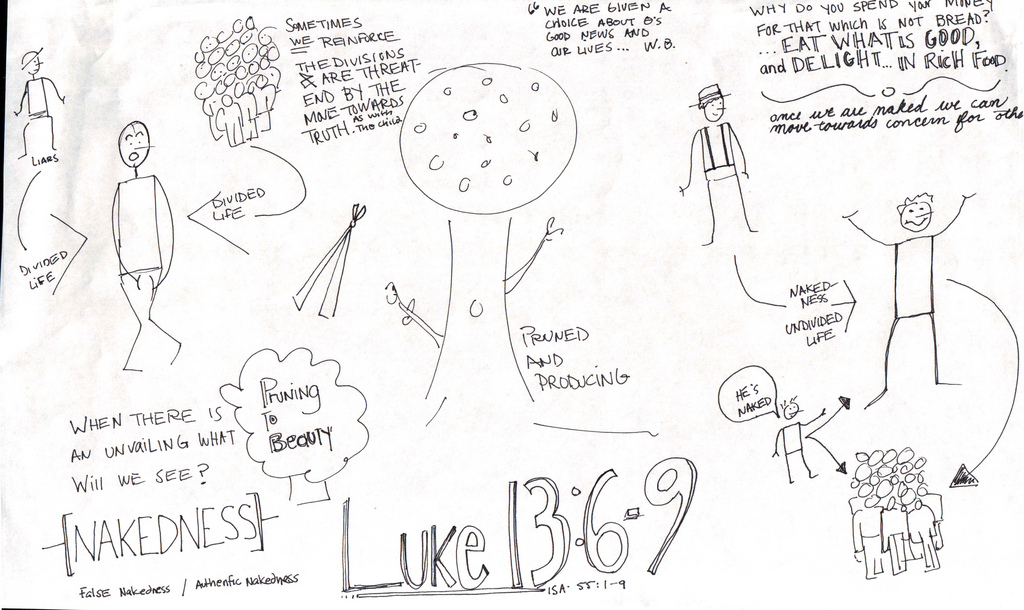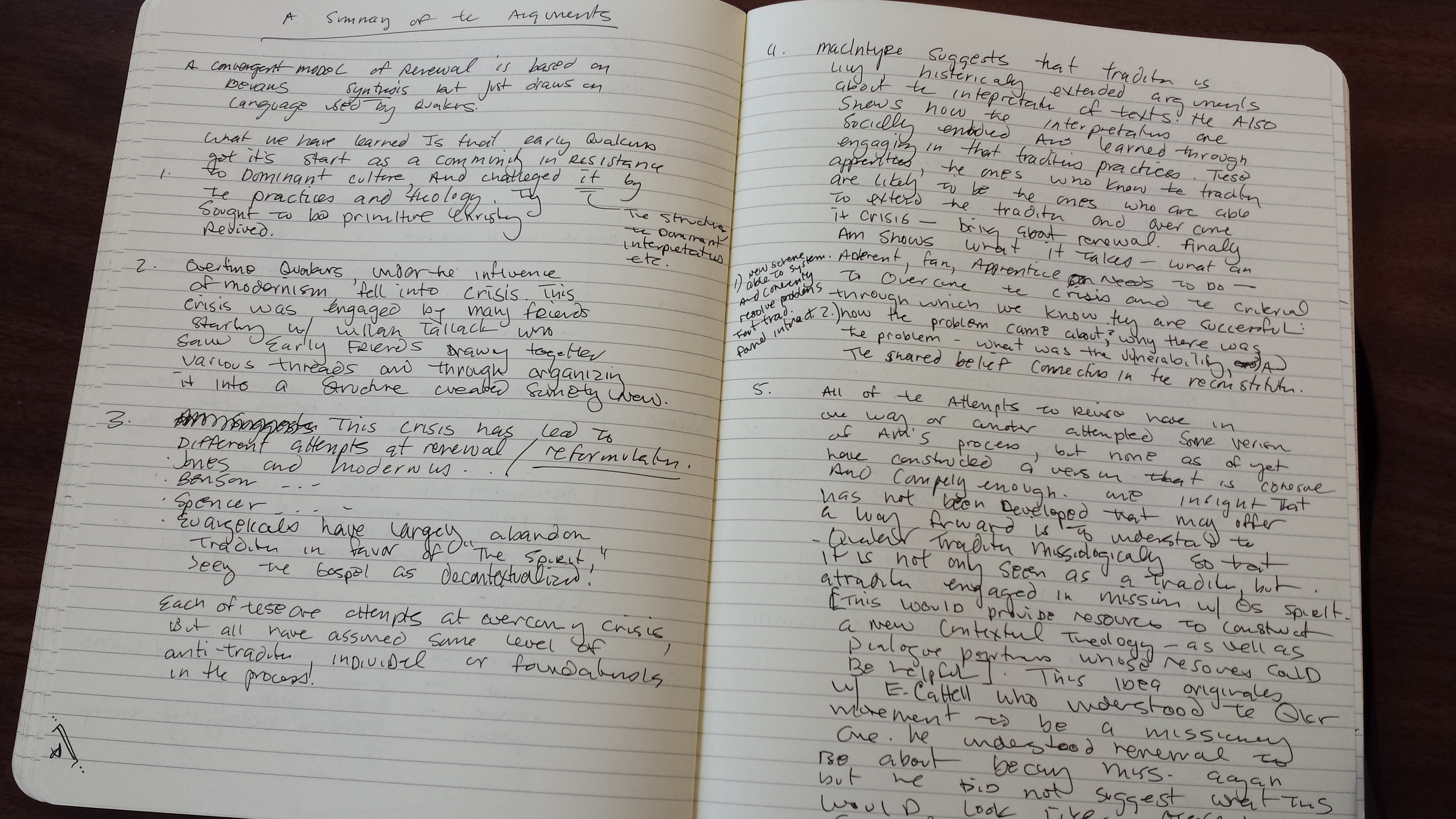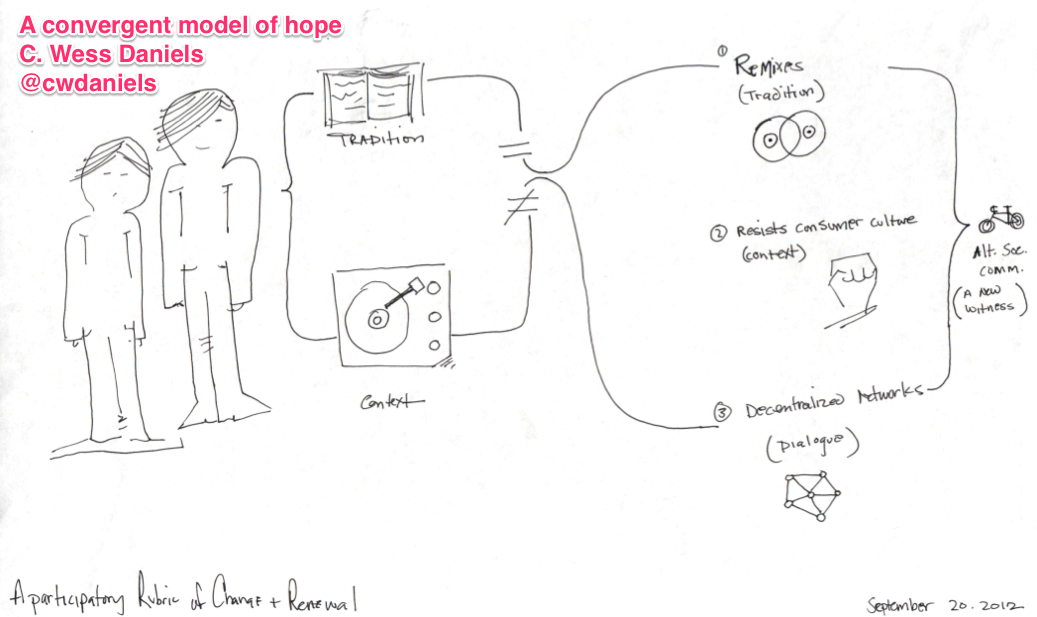#Sketchnotes and The Writing Process

[This is an image of a sketchnote used for a sermon on Luke 13]
There’s a really interesting article about sketching that Mike Rohde linked too from Smashing Magazine titled Hand-Sketching: Things You Didn’t Know Your Doodles Could Accomplish. The whole thing is worth read if your interested in the topic. It is about the usefulness of handwriting and sketching as a way to help reorganize your thinking, remember things better, and be more creative. In the article, Laura Busche, offers some helpful research to buttress these points.
For instance, one of the pieces that stands out to me is about our conditioning when it comes to pen and paper from the age of our youth. Drawing on research done by Turkey’s Bilkent University, Busche suggests that:
Most of us learned to sketch on paper — and this might actually have affected the way our brain deals with it. If paper was one of the first creative stimuli in your life (to the point that, as soon as you saw a blank sheet, you felt the urge to scribble), then it should come as no surprise that your sketching behavior is different on paper than on screen. Regardless of your philosophy of human behavior, we can all agree on one thing: paper has been around far longer than the digital screen.
This reminds me of that wonderful, creative feeling I get every time I sit down with a blank piece of paper and a pen. I love to think of the possibilities. I love the feeling on colored lines on the open space of blank paper. Whether a journal or a scratch piece of paper, I almost always feel inspired to be more creative than I feel typing on my laptop.
How sketching helped in my dissertation writing
Here’s one example of how this has helped me. In September 2012, I was given a month leave to write my dissertation. In those four weeks I was able to write four chapters but not without some tremendous effect. After writing two chapters, I found myself at a cross-roads with the project. The theoretical work was almost complete and I was needing to tie things together, show how the three theorist I was in dialogue with could be used to build a model of change, but I was stuck. I couldn’t for the life of me figure out how everything fit together, or how the model operated.

My first step was to begin handwriting short paragraph summaries of each chapter of the dissertation, working to articulate the core argument of each chapter. And that was really helpful but it didn’t go far enough. I started making lists of pieces I thought were important. And again, this helped but it wasn’t enough. It was too linear, too forced. I was trying to make something happen and I was beginning to panic.
By Wednesday of the third week in September I feared I was going to waste a whole week having not written anything at all and I couldn’t afford to lose that time. I talked to my adviser who told me that I needed to create some space from the project. Take some walks, spend time in prayer, do some day-dreaming and see if an a-ha moment came. I couldn’t believe this was the suggestion he gave me. I felt like he had to be kidding. I need to keep writing, I thought. I don’t have time for meditation!
But he wasn’t kidding and since everything I’d done up to that point hadn’t helped I did the things he suggested. That afternoon I found myself sitting in my favorite spot in the local coffee shop where I like to spend my afternoons working. I put my pen and some blank white paper on the table in front of me and looked at it for awhile and then I began staring out the window. I had that soft gaze they teach you about in yoga. Everything was kind of blurry and out of focus and I just let my mind wander. I rested and relaxed.

I don’t know how long I sat like that but then all of a sudden pieces of an image came to the forefront of my mind, then more, and before I knew it I was sketching out what I had seen in my mind’s eye. In just a few minutes I had sketched a very simple version of the model that tied everything together concretely and succinctly and opened the whole thing up for me in a way that had alluded me for quite some time. In those few moments, I went from not being able to explain the direction of my dissertation without boring the other person to death to basically having the equivalent of an “elevator pitch.”
What happened for me that day completely changed the quality and gave direction to my dissertation. It also taught me how much sketching really does help make new associations and patterns of thinking. I attribute my success that day to a prayerful daydream and a blank piece of paper. I have since made sketching an essential part of my writing and am grateful for it. I almost always sketch out my sermons beforehand (as seen in the top image), and often I do sketch noting while listening to lectures and even reading books.
Interesting in learning more? Here are some resources.
- Check out Mike Rohde’s book: The Sketchnote Handbook.
- Check out the sketch-note army blog.
- Eva Lotta Lamm is awesome at this.
- Doug Neill’s over at [the Graphic Recorder] is local Portland guy whose work I enjoy.
- Here is a sketch note group on flickr
- And some of my own on flickr as well.